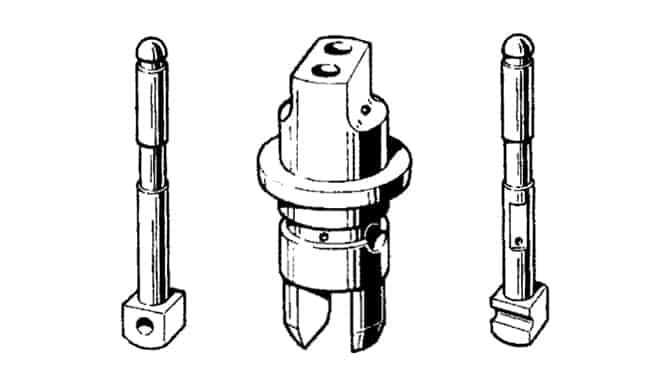- Joined
- Jul 25, 2010
- Messages
- 5,947
OH NO YOU DONT !

 www.morgo.co.uk
www.morgo.co.uk
" Thruxton tappet blocks can only be fitted into a cylinder that has been machined to take the larger diameter body of this block and requires thruxton followers. "
Might pay to check the oversize would take up the error .
THIS dosnt cover them , but the offset would cant the pushrod tubes , and introduce laterl loadd ( even if minimal ) to rockers to .

 www.jrcengineering.com
www.jrcengineering.com
MEASURE your bore centers , or liner width at center / between cyls . Whacking carefully a straight edge ( a straight one ) through between the sleeves there , fore & aft .
With qual cardbord layers packing lightly wedged Ea side . ( folded over lower ruler edge ) .
WILL GET a good indication of the centering of the lifter bore .
GENERALLY I think youll find TRIUMPHS were built to a HIGH STANDARD . Before the workers Co Op , where standards varied . MAINTANANCE & Owner Care however
was often atrocious as were a lot of mechanics , and their equipment , knowledge & disposition .
he Old ' check the spark plugs ' next thing the engines out & your booked in the small town hotel for the week . " Just as well we noticed that " etc etc .

SEE the E3059R , at the last paragraph . ( theres a E3059 too ) wot goes on . The ' R ' THRUXTON Followers need the Cylinder guide block hole OVERBORED .
One would NOTCH the other edge to symetrical laterally with hand tools , or decent bench thingo with lateral gearing . Then Bore ON CENTER n,
With the Cyl Block set up canted , SECURELY . ( a wedge under , timber ? hand formed ) Quite basic really , then .
Les Williams Shop or maybe the ad for Thruxton in the Clasic Racer Mag ( I'll dig it out ) should know all the tricks .
Morgo Thruxton Tappet Block – Morgo Power Equipment
" Thruxton tappet blocks can only be fitted into a cylinder that has been machined to take the larger diameter body of this block and requires thruxton followers. "
Might pay to check the oversize would take up the error .
THIS dosnt cover them , but the offset would cant the pushrod tubes , and introduce laterl loadd ( even if minimal ) to rockers to .

Understanding Triumph Tappet Blocks and Pushrod Tubes | JRC Engineering, Inc.
The neophytes guide to Triumph motorcycle Tappet Blocks, and their applications made easier. The Triumph twin cylinder engine began life...
MEASURE your bore centers , or liner width at center / between cyls . Whacking carefully a straight edge ( a straight one ) through between the sleeves there , fore & aft .
With qual cardbord layers packing lightly wedged Ea side . ( folded over lower ruler edge ) .
WILL GET a good indication of the centering of the lifter bore .
GENERALLY I think youll find TRIUMPHS were built to a HIGH STANDARD . Before the workers Co Op , where standards varied . MAINTANANCE & Owner Care however
was often atrocious as were a lot of mechanics , and their equipment , knowledge & disposition .
he Old ' check the spark plugs ' next thing the engines out & your booked in the small town hotel for the week . " Just as well we noticed that " etc etc .
SEE the E3059R , at the last paragraph . ( theres a E3059 too ) wot goes on . The ' R ' THRUXTON Followers need the Cylinder guide block hole OVERBORED .
One would NOTCH the other edge to symetrical laterally with hand tools , or decent bench thingo with lateral gearing . Then Bore ON CENTER n,
With the Cyl Block set up canted , SECURELY . ( a wedge under , timber ? hand formed ) Quite basic really , then .
Les Williams Shop or maybe the ad for Thruxton in the Clasic Racer Mag ( I'll dig it out ) should know all the tricks .






